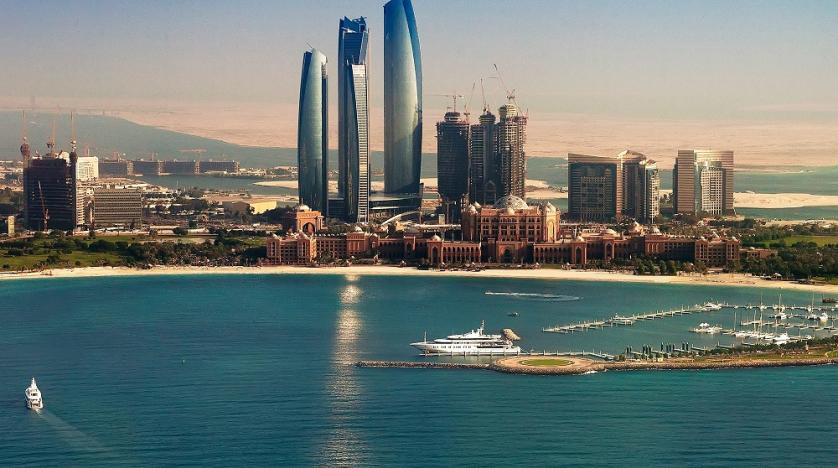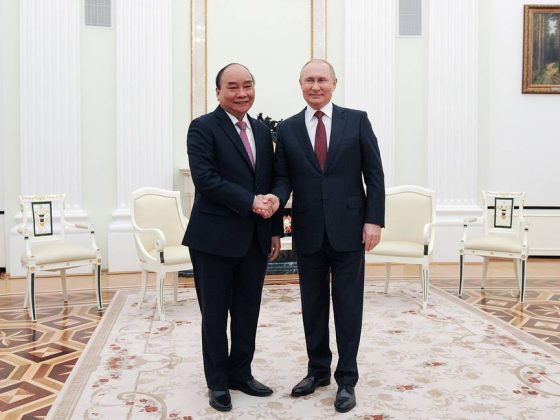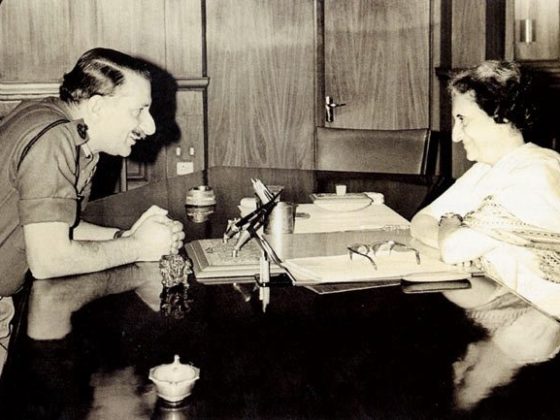The United Arab Emirates has renewed its commitment to the fourth industrial revolution recently with an ambitious target of increasing the industrial sector’s contribution from AED133 billion to AED300 billion (US$ 81.7 billion) by 2031. The main objectives of this ten-year strategy are to leapfrog towards knowledge-intensive industries, apply technology-intensive solutions to retrofit current industries, and push manufacturing in industries like aerospace, pharmaceuticals, medical equipment, etc. However, these objectives are not novel. While the early development plans of the emirates’ primarily focused on diversifying the economy from hydrocarbon revenues, the ultimate objective was to expand towards knowledge-intensive industries. In line with this, economic development plans as early as 1991 record the rulers’ interests in building a manufacturing-oriented economy, but the success is yet to materialize. Even in the case of the most diversified emirate – Dubai, the main drivers of the economy as of 2020 were entrepot activities like trade (26.5%), transportation and storage (12.5%), and financial services (9.7%), while manufacturing contributed to 8.8%. These statistics can be further appreciated by recollecting that from the early 1990s, development plans for Dubai were made under the assumption that the annual real growth rate in its manufacturing sector would meet 7%.[1] As of 2020, the growth rate in manufacturing is only 0.3%. While manufacturing-oriented industrialization was to play a key role in the economy, there have been considerable challenges in realizing it. This article first briefly recalls the historical development efforts of the emirate, then discusses reasons which could have hindered the country’s trajectory towards knowledge-intensive manufacturing, and highlights a potential development instrument the country can utilize to realize its objectives in the present day.
Federal Structure and overcoming the Inequalities
Being a federation every emirate was offered autonomy which retained the control of resources of the respective emirates’ within respective ruling families. This resulted in vast inequalities amidst emirates with Abu Dhabi and Dubai becoming relatively well off compared to others. The remaining emirates were dependent on the budget provisions from oil-rich Abu Dhabi to maintain the social contract over their respective emirates. This internal dynamic resulted in different approaches being taken for economic development in the country. To briefly summarize some of them – Dubai invested in infrastructure to improve its entrepot facilities and industrialize in sectors associated with hydrocarbon resources, Abu Dhabi began focusing on renewable energy and clean technology from the early 2000s, Ras al-Khaimah benefitted from its low-cost production environment (up to 25-50% lower than in other emirates) to become the country’s manufacturing base, and Fujairah developed a storage and bunkering expertise due to its geographical location beyond the chokepoint of the Strait of Hormuz.[2] The developmental push from the emirates created a boom mainly in industries associated with hydro-carbon, real-estate, logistics, and finance. Although official data on sector-wise contribution to GDP remain unpublished, World Bank data confirms that as of 2019 about 16% of the UAE’s GDP is accredited to hydrocarbon sources. It also confirms that as of 2019, manufacturing value-added as a percentage of GDP stood at 8.7%.
In the context of UAE, the viability of proceeding with labour-intensive industries as a starting point was low as the country has a small Emirati population. Second, while most late developing countries have resorted to wage suppression to make production costs competitive, the UAE is restricted from doing so owing to the social contract it shares with its citizens
Despite the autonomy every emirate has enjoyed, the overarching approach the country has used for economic development is to invite foreign firms to the country by providing business-friendly infrastructure and environment.[3]For the emirate of Dubai, which was most successful in diversification, Singapore’s development model was an inspiration for implementing policies promoting business-friendly infrastructure and environment.[4] Among potential factors that explain the challenge in the uptake of knowledge-intensive manufacturing in the UAE, this article focuses on two – First, the inherent characteristic of firm relocation, and second, the existence of a twin labour market in the country with high wage levels. Helleiner argued that it is easier to scale to knowledge-intensive industries when labour-intensive production processes exist locally, this way, production activities can upgrade vertically. The logic was that direct relocation of knowledge-intensive functions of industries would imply high costs to the firm. His thesis was based on the development of the Asian tigers whose development process benefitted from the vertical up-gradation of industrial activity. In the context of UAE, the viability of proceeding with labour-intensive industries as a starting point was low as the country has a small Emirati population. Second, while most late developing countries have resorted to wage suppression to make production costs competitive, the UAE is restricted from doing so owing to the social contract it shares with its citizens. UAE nationals are instead offered much better employment packages in the public sector which deters their participation in the private sector.[5] As a result, the private sector across all skill levels is significantly dependent on expatriate labour. In addition to this, foreign talents are paid twice as much as their home countries across all skill levels. Tong and Al Awad demonstrate that this is true not only for low-skilled and semi-skilled jobs but also for high-skilled jobs by comparing the average wages of high-skilled expatriates from the US and the UK. They compare their wage levels at home and in Dubai, control for purchasing power parities, and find that the salaries are twice as that in their home countries. Competition for knowledge-intensive industries has predominantly arisen from the global North and as income levels in the UAE are twice as much as that in developed countries, there is an inherent risk on the price competitiveness of products on a global scale.
Development model, SWF, and Top-down Approach
A difference in the UAE’s late development model relative to others in the category is that while the latter was challenged in capital accumulation, it was easily accrued for the UAE. The difficulty for the UAE lies in using accumulated capital to break the dependency. Thus, the way forward for the UAE lies in a radical rethinking of its development model. Where vertical integration by first relocating labour-intensive industries demonstrates a bottom-up approach to development, the UAE is better positioned to approach development in a top-down model of vertical integration having accumulated capital. Although public sector investment and involvement in the economy is high, there exists scope to increase the synergies between industry-leading companies and local producers through the public sector. In this case, a policy instrument with the potential to push economic development is the state’s Sovereign Wealth Funds (SWFs).
The channelling of SWFs as a development policy instrument provides an opportunity for greater collaboration between international industry leaders and local businesses. Investing in the economic diversification of the country has been an important objective for the state’s SWFs. Some noticeable instances where the SWFs have built linkages between international companies and local businesses have been in the aerospace sector.[6] For instance, Mubadala entered into strategic partnerships with Airbus and Boeing in 2008 and 2009 respectively and launched Strata Manufacturing as a wholly-owned subsidiary of Mubadala in 2009. Soon after Strata Manufacturing was launched, the company concluded agreements with both Airbus and Boeing to manufacture aircraft parts at its aerostructures manufacturing facility in Al-Ain. This further continued when Strata Manufacturing received a ten-year contract from Boeing for the manufacture of Boeing 777’s empennage ribs and vertical fin rib for Boeing’s 787 Dreamliner. This development model is novel because it demonstrates how embedded autonomy, a key feature in the East Asian development model, can be replicated while collaborating with established international companies for economic development at home. Sovereign Wealth Funds as an institutional investor demonstrate how the state can be at the forefront of national development efforts from a transnational level.
This top-down model of economic development through SWFs is a novel use of the investment vehicle as a policy instrument. It allows the state to direct development from a transnational level, which is an important operational condition for developmental states in an era of globalization
An important lesson from late developers in East Asia and Southeast Asia is that state-directed capitalism is important for economic development. This top-down model of economic development through SWFs is a novel use of the investment vehicle as a policy instrument. It allows the state to direct development from a transnational level, which is an important operational condition for developmental states in an era of globalization. Although the UAE has demonstrated the use of this instrument in some cases, there is great potential to further drive economic development towards the fourth industrial revolution through SWFs. There will likely be more linkages built between local businesses and international companies through SWFs as the UAE moves forward to a knowledge-intensive economy. As the article highlighted above, there will be challenges moving forward in ensuring price competitiveness at a global level when operating in a labour market with price distortions. To this end, the challenge remains in finding innovative financing mechanisms by state investors in the short run and for policymakers to introduce suitable policies for correcting the price distortions in the long run. This ongoing effort in the UAE requires a closer examination from researchers, development practitioners, and policymakers as it is a unique development model and has the potential to deliver promising developmental lessons.
Notes
[1] Euromoney; London”, Periodical, (1997), World Economic Analysis, United Arab Emirates Document no.:198889294, ProQuest One Business.
[2] Ulrichsen, Kristian Coates, The United Arab Emirates: Power, Politics And Policy-Making, p.87-129, Routledge, 2017.
[3] Davidson, Christopher. The United Arab Emirates: A Study In Survival. 1st ed. Lynne Rienner Publishers, 2005.
[4] Sampler, Jeffrey, and Saeb Eigner. Sand To Silicon. Dubai, UAE: Motivate Publ., 2008.
[5] Davidson, Christopher. The United Arab Emirates: A Study In Survival. 1st ed. Lynne Rienner Publishers, 2005.
[6] Ulrichsen, Kristian Coates, The United Arab Emirates: Power, Politics And Policy-Making, p.103-108, Routledge, 2017.
Feature Image Credit: Asharq AL-awsat











